In apple's document, when we are going to extend type:Int, we can write code like this:
Here is my questions:
Why can print("Hello!") work?
I mean that, in line 2: func repetitions(task: () -> Void) {, how computer can know parameter task is as same as task().
why doesn't it work if I write code like this:
here is the code, thank you:
import Foundation
func printHello(){
print("Hello!")
}
extension Int {
func repetitions(task: () -> Void) {
for _ in 0..<self {
task()
}
}
}
3.repetitions (printHello){
}

